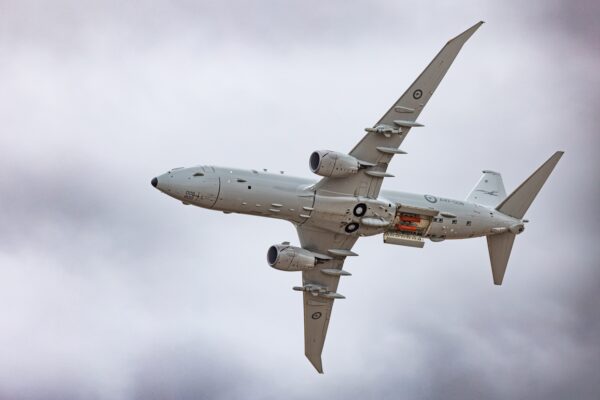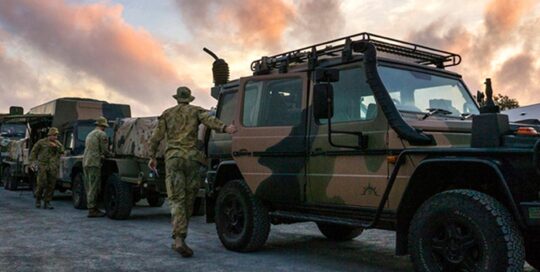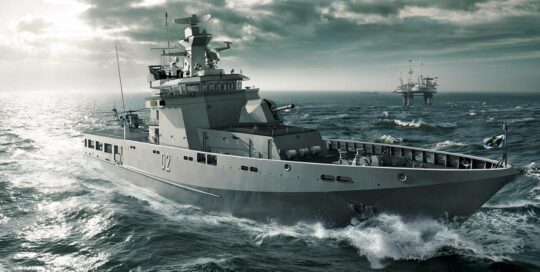SMEs the heart of South Australian OPV program
14 July 2020
With construction of the Offshore Patrol Vessels (OPV) well underway, South Australian SMEs are proving invaluable to the success of the program, showcasing the broad capability of local talent.
Construction of the Arafura Class OPVs at Osborne Naval Shipyard, managed by ASC and Luerssen Australia, currently engages around 250 shipbuilding workers and a number of local SMEs at all stages of the supply chain.
ENGIE Axima, formerly Noske-Kaeser, has been managing the design, manufacturing, testing and installing the chilled water systems, provisions systems, ventilation and fire suppression systems for the OPVs.
David Owen, General Manager ENGIE Axima said the systems are currently being manufactured and tested locally from the company’s specialty facility in Salisbury North.
“We have the only testing facility of its type in Australia, which means systems can be tested prior to installation on the vessel, saving time and resources that may otherwise be wasted if a system is found to be not functional once it is installed,” said David.
“We make a concerted effort to, wherever possible, utilise local manufacturers. Our aim is to promote Australian sovereignty, therefore we align ourselves with a range of South Australian companies.”
ENGIE Axima currently engages with South Australian companies Rowlands Metalworks, Trymoss Engineering and Borg Sheetmetal for various sheet metal, ducting, and bespoke manufacturing work. They also work with international organisation Nobles, which is currently headquartered just outside Adelaide.
“Since securing the OPV contract, ENGIE Axima has increased its footprint in Australia by opening the manufacturing facility in South Australia, which has also meant an increase in staff numbers,” David said.
“It has also meant that we can now respond to other EOIs for projects involving Marine HVAC design, manufacture, test and install, such as SEA1000 and SEA5000.”
David believes that South Australian companies are more than up to the challenge of taking on continuous shipbuilding projects within the state.
“The facilities and infrastructure offered at Osborne, the location and the niche SMEs such as ourselves and the companies that have positioned themselves in South Australia to support Australian sovereignty in this market, we feel, ensure a very bright future for all.”
Penske Australia, in collaboration with MTU, are supplying the propulsion system including engines, gearboxes, air compressors and monitoring equipment for the OPV project from their facility in Edinburgh. They are also providing technical and engineering support during the construction phase of the project.
Projects and Business Manager, Defence, Michael Zdjelar said the biggest contribution Penske Australia is able to make to the project is the decades of local knowledge and experience in supporting defence assets.
“By virtue of our knowledge and existing relationships, we are well supported by local logistics and transport companies that have integrated into our global supply chain for this project to meet the build schedule of our customer,” Michael said.
“One of the main positives to come from this project to date is that we have been able to transfer the skills and knowledge gained, such as supporting operational vessels to demonstrating our abilities during the construction of new vessels.”
“Another positive to come from this project is that the learning opportunities are ever present; The propulsion system is integral to the operational capability of the vessel and as this is a new type of engine for Defence, the knowledge and experience gained during this build program will continue to evolve and will prove to be a valuable tool in providing service and support of future vessels.”
Defence SA Chief Executive Richard Price said the involvement of these companies demonstrated South Australia’s great capability to participate in the build of naval vessels and are vital for the state’s job creation.
“Having local industry involvement in projects such as on the Offshore Patrol Vessels builds experience in preparation for even more complex ship and submarine builds in the future,” Richard said.
“South Australian industry is building capacity around HVAC and diesel generators that meet the future needs of the fleet.
“The depth of South Australia’s industry supply chain is on show in the build of the 12 OPVs, with potentially another eight vessels in the pipeline following the release of the 2020 Force Structure Plan.”
Construction of the first of 12 Arafura Class OPVs commenced in November 2018.









